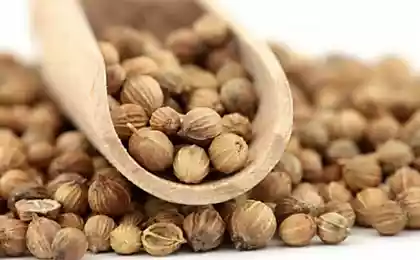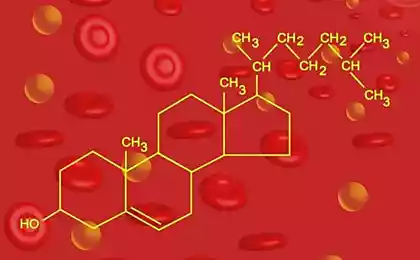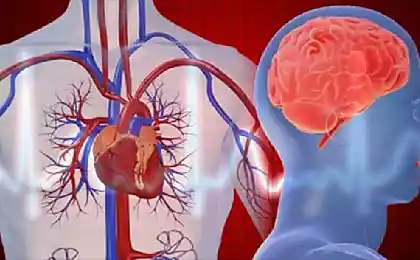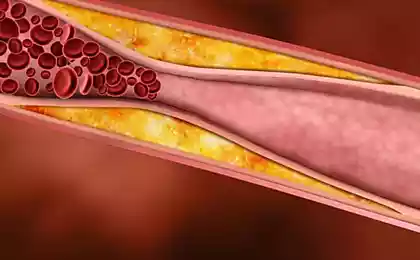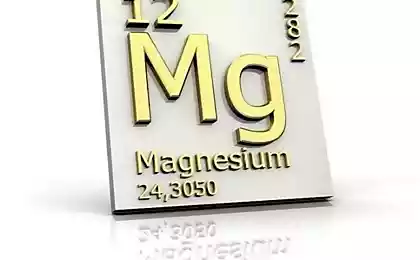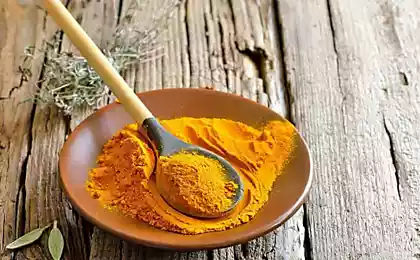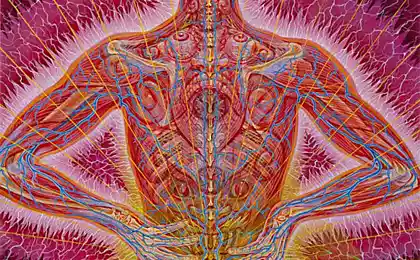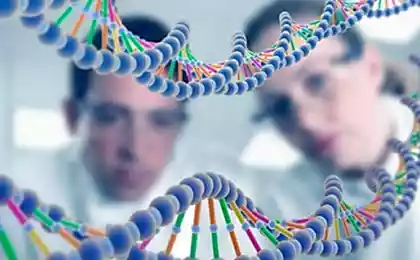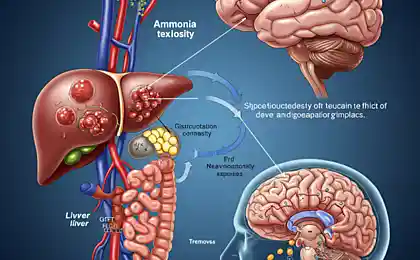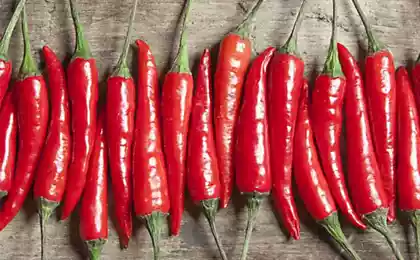462
Coriander essential for vascular health and lower cholesterol
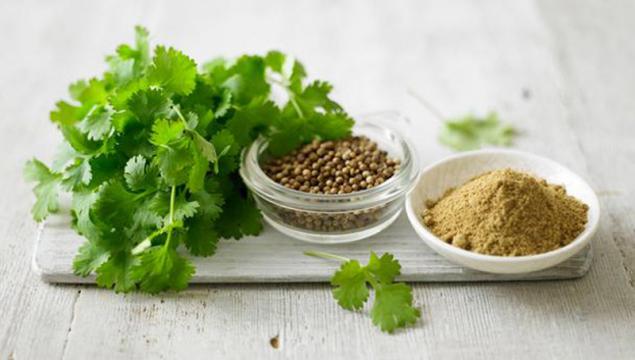
Coriander is one of the most popular herbs in the Mediterranean. It is widely used in cooking hot and spicy dishes. This plant contains many chemical compounds that prevent diseases and promote good health. Coriander, like garlic, is widely used in folk medicine.
Botanists attribute the coriander to the family Apiaceae. Its Latin scientific name is Coriandrum sativum. Resource Nutrution And You told a lot of interesting things about this wonderful plant.
Coriander originates from the Mediterranean and Asia Minor (Anatolia, middle part of modern Turkey). Coriander is an evergreen plant. But its flowering required to moisten the soil. Tall coriander reaches 30-60 cm. It has dark green soft leaves without pile, which may differ in form. From coriander leaves and stems is based on a lightweight citrus scent. Shaped like little umbrellas, flowers of coriander are white and pinkish. It blooms in mid-summer. Aromatic coriander seeds are characterized by a roundish oval form and yellowish brown color. These seeds are used as spices. They give the dish a slight spiciness.
Seasoning is good in moderation, and it never hurts to consult with a registered dietitian about whether to include in your diet certain foods and spices. You must remember that not all secular views about the benefits of certain products have received scientific confirmation.
Benefit coriander health
Coriander greens are low in calories and contains no cholesterol. Its dark green leaves in significant quantities contain antioxidants, essential oils, vitamins and fiber, part of the food. They help to reduce LDL ("bad cholesterol"), while increasing HDL ("good cholesterol").
Its leaves and seeds contain many essential volatile oils, including borneol, linalool, cineole, cymene, terpineol, dipentene, phellandrene, pinene and terpinolene. They are also rich in various antioxidant polyphenolic flavonoids, including quercetin, kaempferol, and apigenin rhamnetin.
Coriander is a good source of minerals such as potassium, calcium, manganese, iron and magnesium. Potassium is an important component of cell and body fluids that helps control heart rate and blood pressure. Iron plays an important role in the formation of red blood cells. Manganese is used by the body as a factor-associated antioxidant enzyme called superoxide dismutase.
Coriander is rich in vital vitamins, including folic acid, Riboflavin, nicotinic acid, vitamin A, beta-carotene and vitamin C. Vitamin C is a powerful natural antioxidant. One hundred grams coriander leaves contains 30% of recommended daily value of vitamin C.
100 grams of coriander contains 6748 IU of vitamin A, that corresponds to 225% of the recommended daily allowance. Vitamin a is an essential fat-soluble vitamin with antioxidant properties. It helps to maintain healthy mucous membranes and skin and is also useful for vision. Eating natural foods, rich in vitamin a and flavonoids (carotenes) helps body protect from lung cancer and oral cavity.
Coriander is one of the richest in vitamin K herbs. It contains 258% of the recommended daily consumption of this vitamin. Vitamin K strengthens bones, promoting osteotropic activity in them. It was also established its role in limiting damage to the neurons of the brain damage in Alzheimer's disease.
Energy value of 100 grams coriander leaves surprisingly low — only 23 calories, but the content of phytonutrients it is a real superfood!
While its low calorie content, it contains (per 100 grams in the percent of the daily value of consumption) 15% of folates, 11% of vitamin B6 (pyridoxine), 45% of vitamin C, 225% of vitamin A, 258% of vitamin K, 22% of iron, 18% manganese.
The choice of coriander in the store

The leaves and seeds of coriander can be found in shops and markets. Prefer fresh leaves are bright green with firm stems with no defects and yellow spots.
Rinse the leaves under running water, remove the roots, old and wrinkled leaves. Fresh coriander should be stored in the refrigerator wrapped in a slightly damp clean towel. Use it as soon as possible, because if you store coriander long, it loses flavor and nutrients. Coriander seeds and oil are also found in stores. Seeds usually used as spice.
The coriander in medicine
The leaves, roots and stems of coriander are known for their antiseptic and carminative properties.
This herb contains many phytochemical compounds; phenolic flavonoid antioxidants, including quercetin and essential oils, which are used in traditional medicine as painkillers, aphrodisiacs, carminative, deodorizing, promotes digestion of food, fungicidal, fat and stimulants.
The seed oil of coriander is also used in folk medicine, including for weight loss and as antispasmodic remedies.
The use of coriander in cooking

Fresh coriander leaves should be thoroughly washed. After all, they can be not only earth and sand, but also pesticide residues.
Coriander is widely used in the cuisines of Eastern Europe and Asia since ancient times. In combination with other edible herbs and spices, it gives a unique flavor and taste to the dishes of chicken, vegetables, fish and meat.
Coriander is also added to soups and sauces. In the very popular Mediterranean cilantro pesto, which includes fresh coriander, red pepper, garlic, olive oil and pumpkin seeds. Pesto seasoned with a few drops of lemon juice and serve with pasta or on sandwiches. It is also used as a marinade for fish and poultry, as well as other combinations of meals.
Chopped fresh coriander leaves fry. In this form they are an excellent addition to fresh salads.
Powder of coriander seeds is one of the main ingredients of curry powder, seasoning mixes based on turmeric.
Nutritional value of coriander
In parentheses are the percentage of the daily allowance. Nutritional value is based on 100 grams fresh coriander according to information from the Ministry of agriculture of the United States.
General information:
energy value — 23 kilocalories (1%);
carbs — 3.67 gram (3%);
protein — 2.13 milligram (4%);
fats — 0.52 grams (2%);
cholesterol — 0 milligrams (0%);
fiber, part of the food — 2,80 gram (6.5 per cent).
Vitamins:
folate — 62 micrograms (15,5%);
nicotinic acid — 1,114 milligrams (7%);
Pantothenic acid — 0,570 milligrams (11%);
pyridoxine (vitamin B6) — 0,149 milligrams (11%);
Riboflavin (vitamin B2) — 0,162 mg (12%);
thiamine (vitamin B1) — 0.067 milligram (5,5%);
vitamin A — 6748 international units (IU, IU) is 225%;
vitamin C 27 mg (45%);
vitamin E — 2, 50 milligrams (17%);
vitamin K — 310 micrograms (258%).
Electrolytes:
sodium — 46 mg (3%);
potassium — 521 mg (11%).
Minerals:
calcium 67 mg (7%);
iron — 1.77 mg (22%);
magnesium — 26 mg (6.5 per cent);
manganese — 0,426 milligrams (18,5%);
phosphorus — 48 mg (7%);
selenium — 0.9 milligrams (2%);
zinc — 0.50 milligram (4.5 percent).
Phytonutrients:
alpha-carotene (α-carotene) is 36 micrograms;
beta-carotene (ß-carotene), which is rich in carrots — 3930 micrograms;
beta-cryptoxanthin (ß-cryptoxanthin) — 202 micrograms;
lutein-zeaxanthin — 865 micrograms.

Whether on the Christmas table seasoned with coriander fragrant dishes?
Source: hi-news.ru



